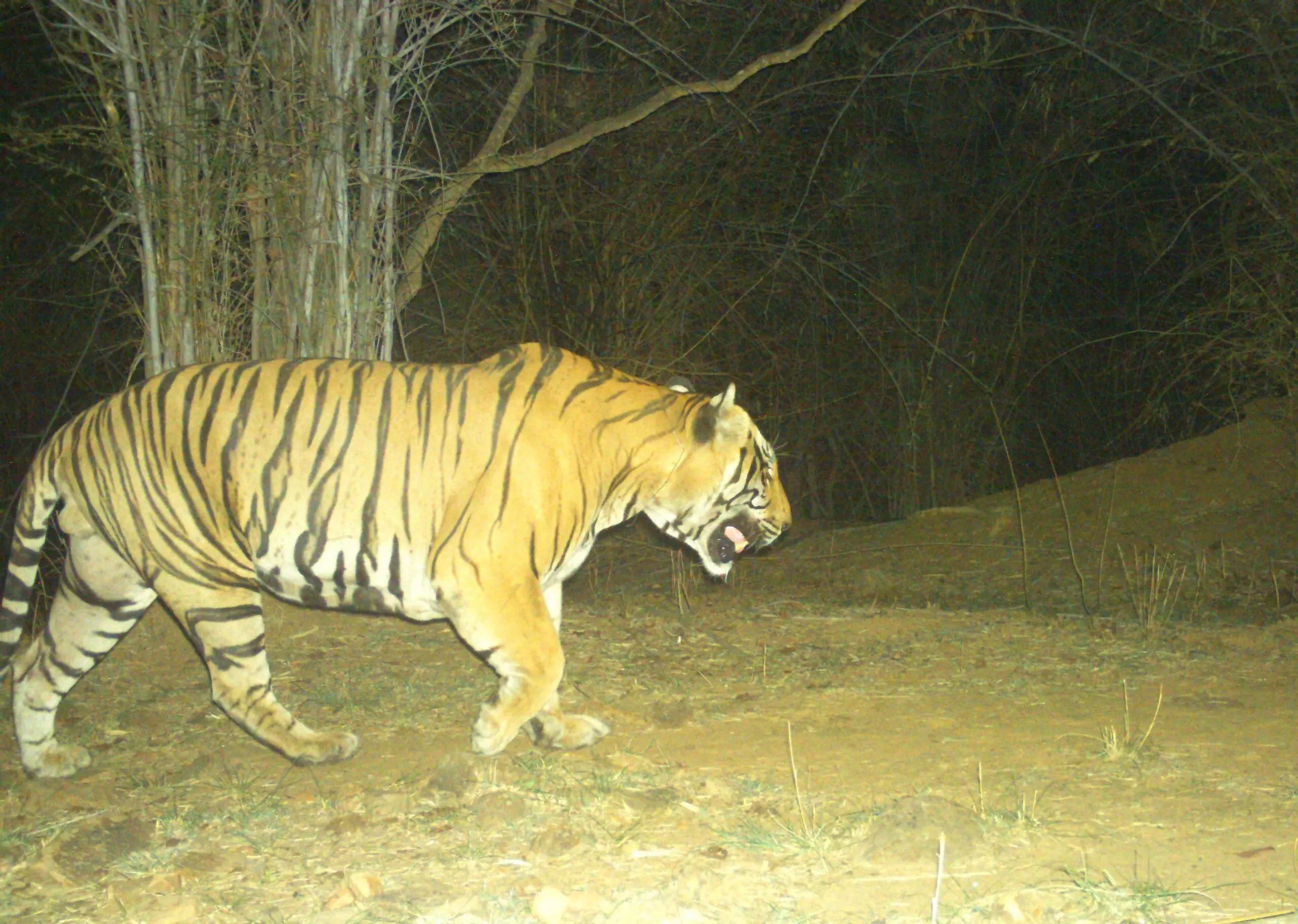'Tiger Zinda Hai': 20 years on, big cat spotted in Amrabad Tiger Reserve, Nagarjunasagar divison
The big cat is believed to be in a healthy condition.
By Sri Lakshmi Muttevi
Telangana: After more than 20 years, a male tiger was spotted in the Amrabad Tiger Reserve of Nagarjunasagar division in Telangana.
The forest teams noticed the movements of the tiger a few days ago. The big cat is believed to be in a healthy condition.
Spread over around 2611.4 square kilometers, Amrabad Tiger Reserve in Nagarkurnool and Nalgonda districts in the southern part of Telangana is one of the largest reserves in India. It is a well-known and well-preserved nature reserve in Nallamala Hills, which is a part of the Eastern Ghats chain.
It is divided into three forest divisions---Amarabad, Achampet in Nagarkurnool district, and Nagarjunsagar division in Nalgonda district. Major reservoirs like the Srisailam Dam and Nagarjunsagar Dam are fed by the river Krishna and its several perennial streams that originate in the Tiger Reserve. To date, the tiger population was only found in the Amrabad and Achampet forest divisions.
Set up in 1987, Amrabad Tiger Reserve was notified as a sanctuary in 1983. After the bifurcation of Telugu States in 2014, it was declared as Tiger Reserve. It covers a part of the Nallamala Forest and is home to a variety of flora and fauna.
"The tiger population in Amrabad Tiger Reserve is 26. This new one was captured on a camera trap set up in the Kambalapally area, and we hope that it makes this forest its home. Our teams have kept camera traps to monitor the movements, and we are collecting all the data," told Elusing Meru, Elusing Meru, Incharge - Chief Wildlife Warden (CWLW) of Nagarjunasagar division, speaking to NewsMeter.
Tiger population census
According to the study on the status of tigers released by the Ministry of Environment, Forests, and Climate Change for the year 2022, the number of tigers in Telangana has dropped from 26 in 2018 to 21 in 2022.
The report shows a corresponding increase in the number of tigers in the Nagarjuna Sagar Tiger Reserve (NSTR) in Andhra Pradesh, rising from 48 in 2018 to 63 in 2022. The study reveals that there has been tiger migration between the Amrabad Tiger Reserve in Telangana and NSTR in Andhra Pradesh. Additionally, some tigers might have evaded the camera traps or been recorded in either of the two States during the survey conducted from December 2021 to March 2022.
However, the data combining both Andhra Pradesh and Telangana shows that there has been an increase in tiger population from 74 in 2018 to 84 in 2022.
Tough terrain
According to Meru, there are various reasons for the lower tiger population or migration. These include poaching. Sometimes, tigers avoid camera traps.
"The area is vast, and it is tough to spot tigers and access the data. Our team cannot go on vehicles to some of the areas as the terrain is tough. We try to get the data through e-surveillance using cameras," said Meru.
Plastic-free zone
The Telangana government has declared Amrabad Tiger Reserve a plastic-free zone from July 1. A total ban on single-use plastic, multi-player plastic, and pet bottles has been imposed.
Visitors carrying food items in plastic wraps are advised to dispose of the wraps in designated places and garbage bins and not to litter the tiger reserve areas.
Continuous frisking of Single use plastic at Mannanur, Domalapenta and Umamaheshwari Check posts. Kindly cooperate and avoid use any plastic in Amrabad Tiger Reserve. #PlasticfreeATR @byadavbjp @IKondaSurekha @dobriyalrm @pargaien @HiHyderabad @Akshayswitcheko @ntca_india pic.twitter.com/fYZ5dpn0Tm
— Amrabad Tiger Reserve (@AmrabadTiger) July 1, 2024
A month ago. Chief Secretary A Santhi Kumari has directed the officials to formulate an action plan in this direction to see that the tiger reserve area becomes a plastic-free zone by July-end. Before imposing the plastic ban, the forest department has also conducted awareness programs and campaigns on the adverse impact of using plastic in forests.